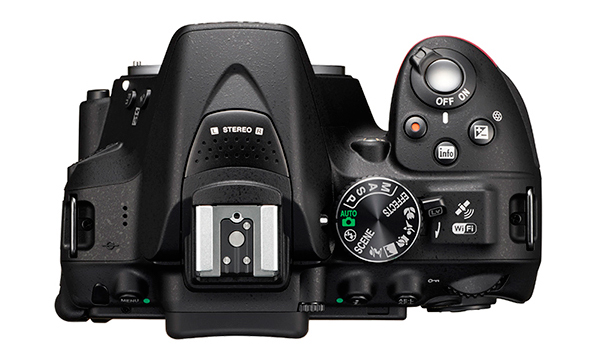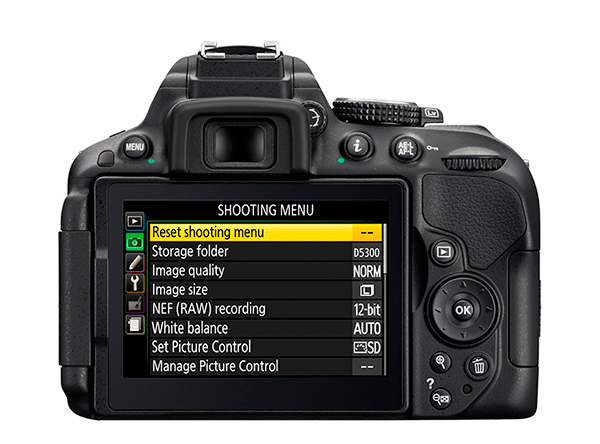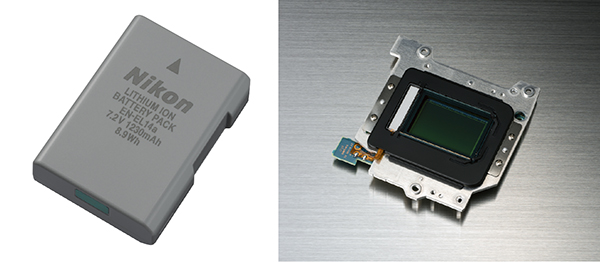Wednesday, November 27, 2013
Nikkei eases further off 6-month high; Panasonic, Nikon up
Source: Reuters
Saturday, November 23, 2013
Latin Times

DSLR Cameras For Black Friday
Black Friday 2013 is getting closer and DSLR cameras will have their prices slashed at a number of retailers. DSLR cameras are perfect for taking pictures as the image quality is much more crisp and shutter speed that much faster. The cameras have better color reproduction, dynamic range and perform better under low light situations. Black Friday makes the perfect excuse for one to update the little point and shoot camera and take pictures like a professional as there are various discounts on this busy shopping day extravaganza. With a new DSLR camera you'll be ready to snap photos this Christmas and New Year's and store memories so you will never forget. Check out the Black Friday deals we have found for you down below! RELATED: Tablet Black Friday 2013 Deals: See The Best Sales For iPad, Kindle Fire, Galaxy Note And More!
RELATED: Black Friday 2013 Deals Roundup: Guide To All The Best Sales At Walmart, Best Buy, Target For Tablets, Laptops, Televisions And More!
BEST BUY: The Canon EOS Rebel T3 DSLR camera with 18-55mm IS Lens is $399.99 with a free camera bag. If you pay $449.96 for the same camera plust the 75-300mm lens you get the free camera bag plus a 16GB SDHC memory card. The Nikon D3200 DSLR camera double zoom lens kit with 18-55mm VR lens and a 55-200 mm lens is $499.99 with a free camera bag and a 16GB memory card. For the Canon EOS Rebel T3i DSLR camera which has the 18-55mm IS lens include it is $549.99, if you buy the bubdle with an additional 55-250mm IS lens, a 32GB memory card and the camera bag, the cost will be $749.96. The Nikon D7000 DSLR camera with 18-140mm VR Lens is $799.99 and the bundle is $1099.96 with a 55-300mm VR lens, 32GB memory card and a camera bag. RELATED: Apple Black Friday 2013 Deals: Where And How To Get iPad Air, iPad Mini, iPhone 5S Discounts
only has the Nikon D3200 2-lens bubdle with the 55-200mm zoom lens and the 18-55mm standard lens at $499.99. WALMART: The Nikon D5100 is $499 with a 18-55mm lens that shoots video in 1080p costs $499. The Canon T3 bundle includes a 75-300mm lens, a camera bag and an 8GB memory card for $449. Digital cameras are also on sale with the Nikon L27 for $49, Canon Powershot SX160 at $79 and the Fujifilm S4420 at $99. TARGETSTAPLES has a deal with the Canon Rebel T3 kit with the 18-55mm lens for $449.98 if you buy the 75-300mm zoom lens as well. The Canon Powershot SX170 is $149.99 and the Canon PowerShot A2500 is $79.99, while the A1400 model sets you back $69.99.
Like Us on Facebook
Source: Latintimes
Thursday, November 21, 2013
New And Exclusive Micro-Site Content
ePHOTOzine's Micro-Site Roundup - Find out what's been happening on our five Micro-Sites.
Posted:

Here's a roundup of the exclusive content we've got for you to have a read of on our five micro-sites this week:
On PENTAXPORTAL this week, you can take a look at some top tips for photographing seals with your Pentax camera, and check out some top Pentax sunset photos. Plus, the brand new K-3 DSLR has been reviewed on site this week, and there's news of new images from Ricoh Imaging brand ambassadors.
Over On EIZO ColorZone, you can learn how to perform a monitor viewing angle check and find out why ColorNavigator software is a great tool for aiding calibration. Plus, there's news of a new 3D CG colour management handbook that's now available.
Meanwhile, on Olympus Image Space this week, there are techniques on how to use blur creatively, and there's news on Olympus workshops taking place over the coming months with Damian McGillicuddy and Steve Gosling. Plus, news on the Olympus Impressions 'Fall' competition, and £100 accessory cashback when you buy an Olympus OM-D E-M1 camera have also gone live.
On Totally Tamron this week, you can learn some top tips for taking better photos of ice with your Tamron lens, plus there are some top Tamron portrait photos for you to take a look at. Don't forget to take a look at David Pritchard's blog the days zoom past, too, as he's been out-and-about with his newly acquired Tamron 24-70mm lens.
Last but not least, on Nikon Nation this week, you can check out some ideas and tips for on location portrait shoots, get creative with colour balance and lots more. Plus, don't miss the Nikon D5300 Cyber Monday Deal DSLR review and news of ono-to one training with Nikon School in December.
Make sure you check back to the Micro-Sites regularly, as new and exclusive content is posted weekly!


Source: Ephotozine
Wednesday, November 13, 2013
Nikon D5300 Rumors, Specs, Price and Release Info: Camera Company Recently Releases Full Specs
The latest model of the DX-format DSLR has 24.2 megapixels, a DX-format CMOS sensor with no optical low-pass filter, built-in Wi-Fi capabilities, a built-in GPS, a durable light body, a 3.2-inch 1037k-dot vari-angle LCCD monitor with wide viewing angle, NAL-1 features for zoom/focus assist, and more.
It also has a full-HD 1920x1080/60p capability for movies, where selection can range from 24, 25, 30,50, and 60p. There are also 9 special effects for creative expression.
Like Us on Facebook
As previously reported, Nikon Rumors reports that the Nikon D5300 is expected to be introduced before the Photo Plus show in NYC at the end of the month or the CES show in Las Vegas in January.
It is reported that this will be the first camera to get the new EXPEED 4 processor. Some other rumored specs include 24 Megapixels, 39 AF points, built-in Wi-Fi and built-in GPS.
Photography Bay reports that the D530 will be introduced as an entry-level APS-C format camera. There are no reports yet of whether or not it will have better image quality over the D5200, but it would make sense to add additional video features to the D5300.
No prices have been reported yet either, but Inferse reports that it may be priced lower than the D5200 was when it first was released.
Source: Designntrend
Saturday, November 9, 2013
Nikon finally adds built-in Wi-Fi to its DSLR line-up with the D5300

As cameras all around them have gained built-in wireless capabilities, Nikon DSLRs have begun to feel strangely dated with their need for an additional Wi-Fi adapter to keep up with their wireless sharing and remote shooting counterparts. But with the freshly announced D5300, Nikon has finally revealed its first DSLR with built-in Wi-Fi and GPS.
The Nikon D5300 is an update to the mid-range D5200 which was released last year and arguably closes the gap to the enthusiast-targeted D7100. While it still features a 24 megapixel DX format (23.5 x 15.6 mm) APS-C CMOS sensor, and a 39-point autofocus system with nine cross-type sensors, the D5300 has now been designed without an optical low-pass filter to enable it to capture a greater level of detail than equally megapixeled cameras.
It's also been upgraded to use the Nikon EXPEED 4 image processing engine which enables a larger ISO range of 100 to 12,800 (expandable to 25,600 equivalent) though the camera still has a top continuous burst speed of 5 frames per second. Other improvements include the flipping, tilting and turning LCD on the rear which now measures 3.2 inches and has a 1037K dot resolution. Full HD 1080p video can now also be recorded at 60/50 fps and a new pentamirror increases viewfinder magnification to approx. 0.82x.

But it's the built-in Wi-Fi ability which will arguably be seen as the biggest improvement over the D5200, which required the optional WU-1a Wireless Mobile Adapter. Wireless functions in the Nikon D5300 include the ability to transfer images without interrupting your shooting, and to manually select the files you want to send to a phone or tablet for instant sharing.
There's also the option to use an iOS or Android device as a remote monitor or controller for things like adjusting focusing and shutter control when not directly with the camera. This can be handy for things like shooting group pictures with yourself in, or just times when awkward camera positioning would make it too difficult to use on-camera controls. Built-in GPS also means images can be geotagged with latitude, longitude, and altitude data, without the use of external adapters.

Measuring 125 x 98 x 76 mm (4.9 x 3.9 x 3 inches) and weighing 530 g (1 lb 2.7 oz) the D5300 is slightly smaller and lighter than its predecessor. Nikon says this is because it's used a newly developed monocoque-structure with carbon fiber reinforced plastic material for the camera body, allowing it to be both more compact and durable.
The Nikon D5300 will be available in black, red or gray in November. It's due to sell for US$800 body-only, or $1,400 with a AF-S DX NIKKOR 18-140mm F3.5-5.6G ED VR kit lens.
Product page: Nikon D5300
 Simon is a journalist and photographer who has spent the last ten years working for national UK newspapers - but has never hacked a mobile phone - and specializes in writing about weird products and photography technology. When not writing for Gizmag, Simon is often found playing with LEGO and drinking far too much coffee. All articles by Simon Crisp
Simon is a journalist and photographer who has spent the last ten years working for national UK newspapers - but has never hacked a mobile phone - and specializes in writing about weird products and photography technology. When not writing for Gizmag, Simon is often found playing with LEGO and drinking far too much coffee. All articles by Simon Crisp
Related Articles
Just enter your friends and your email address into the form belowFor multiple addresses, separate each with a comma
Privacy is safe with us because we have a strict privacy policy.
Source: Gizmag
Friday, November 8, 2013
Nikon D5300 hands-on review
Nikon Nikon D5300 Black Friday Deal at a glance:
- 24.2-million-pixel, APS-C-sized CMOS sensor
- 1.037-million-dot, 3.2in, 170° LCD screen
- Expeed 4 image processor
- 39-point AF system with nine cross-type sensors
- ISO 100-25,600
- Price £730 body only
- See product shots of the Nikon D5300
Nikon D5300 - Introduction
While the serious enthusiast is unlikely to be swayed into buying a Nikon DSLR over a Canon model purely because the Nikon camera is newer, the reality is that at the non-premium end of the market this is how some people make their buying decisions. 'Newer' must mean 'better'.
This demand for the 'new' explains why we see such short product cycles in the camera market, and why manufacturers feel the need to introduce even small advances in technology or feature sets in cameras with completely new names - rather than a 'Mark II' type of naming format.
Those familiar with Nikon's range of DSLRs may not see the sense in the company's introduction of the new D5300, especially as Nikon will maintain the D5200 alongside this model in the range - new and old together. By doing so, though, Nikon expands the number of cameras it has on offer and the number of price points it can cover, while also being able to have a model that can carry a 'New' sticker, and which introduces new features to the price band in which it will sit.
That's not to say that the Nikon D5300 isn't different to the D5200, though, as a new processor, new body design and the integration of wireless communications do genuinely bring additional benefits to the photographer.
Nikon D5300 - Design and handling
Nikon is very pleased that it has achieved a new way of constructing camera bodies, which it describes as a 'monocoque'. Instead of there being a chassis, onto which the components and the body shell are attached, the D5300 is designed to have everything screwed to the insides of the body form itself: exoskeleton, rather then the usual endoskeleton.
 Image: The top of the camera houses only a few control points, keeping the layout simple and unintimidating for newcomers. A stereo microphone lives in front of the hotshoe
Image: The top of the camera houses only a few control points, keeping the layout simple and unintimidating for newcomers. A stereo microphone lives in front of the hotshoe The D5300's body shell is also made of a new material, although Nikon won't say what that new material is - just that it is new. The upshot is that the body is less heavy than it might have been, and is 25g lighter, including the battery, than the camera it doesn't replace, the D5200.
I'm not entirely sure that when I used the camera I could appreciate the exact weight loss that has occurred, but I was able to enjoy the fact that this is truly a lightweight DSLR, of the type that we might not mind carrying all day, over the shoulder, in a bag or in a large pocket. The body is very small too, although it is balanced with a reassuringly large grip for the right hand. It seems ironic that a small and light camera should need a large grip, but I found it allowed me to be aware I was carrying the camera, and should a larger lens be attached it will help to support the forward pull of such a weight distribution.
 Image: The body styling will be familiar to those used to the Nikon 5000 series, as will the standard menu. The 3.2in flip-out screen has impressive visibility
Image: The body styling will be familiar to those used to the Nikon 5000 series, as will the standard menu. The 3.2in flip-out screen has impressive visibility The buttons are arranged much as one might expect, with all the principal controls falling easily to the finger or thumb. The rear 3.2in LCD is very nicely bright and clear, with its 1.037-million-dot resolution. Nikon has set the viewing panel into the glass screen, so there are no gaps or internal reflections, which produces good contrast and a clear view from a quoted angled of up to 170°. I am impressed.
In live view, the screen works well when the camera is held low or high, and I found the AF quick enough and seemingly accurate. The response of the shutter in live view also seems good.
 Image: Nikon has retained its choice of layouts for the rear-screen display, with text-based and graphically expressed options to suit personal preferences
Image: Nikon has retained its choice of layouts for the rear-screen display, with text-based and graphically expressed options to suit personal preferences Nikon D5300 - Still to test
The principal changes in this model are of the sort that will only be proved in testing, but at this stage their potential is worth pointing out. Using the higher-capacity Expeed 4 processor, Nikon claims it has been able to reduce noise in its images through the use of more complicated calculations. A related benefit is that now noise levels are lower the company is comfortable offering a higher ISO setting - the Nikon D5300 allows ratings of up to ISO 25,600. More complex calculations also provide the potential for better white balance assessment in automatic modes via a more comprehensive assessment of the scene, and a better rendition of colour overall.
Lower noise should also lead to better resolution of detail from the 24.2-million-pixel sensor, as should Nikon's decision to do without the micro-blurring effects of a low-pass (anti-aliasing) filter. Leaving the low-pass filter off the sensor has become very fashionable, and I suspect it will be a great draw for many photographers. Moiré in images created by a sensor with 24 million pixels, even an APS-C-sized sensor, is still something that is quite likely to occur, but there is also plenty of software to correct it after the event.
The other thing to note is that this model sees the introduction of a new battery cell, which Nikon says increases capacity from 500 shots to 600 compared to the cell used in the D5200. It annoys me when companies change their battery forms, but on this occasion the new cell and that used in the D5200 are interchangeable.
Obviously, I couldn't test the battery life of the camera, but we should take the increase as good news. I will also have to wait to test the Wi-Fi and GPS capabilities of this new model, but neither can be held as negative points just for their inclusion. The Wi-Fi integration means users will be able to control the camera from an Android or iOS device, and will be able to wirelessly transfer images for viewing, editing and sending while on the go.
 Image: The new battery, which is backwards compatible with the D5200, offers a longer life. There is no low-pass filter on the sensor, for extra resolution
Image: The new battery, which is backwards compatible with the D5200, offers a longer life. There is no low-pass filter on the sensor, for extra resolution Nikon D5300 - Conclusion
It would be easy to dismiss the Nikon D5300 for being too similar to the D5200, but that really isn't the point. There is not much wrong with the D5200, and the changes that this new model brings can only make it better. Perhaps Nikon could have called it the D5200 ll, but I'm not sure it matters one bit.
The Nikon D5300 will cost around £730 body only and be available from 14 November.
Source: Amateurphotographer